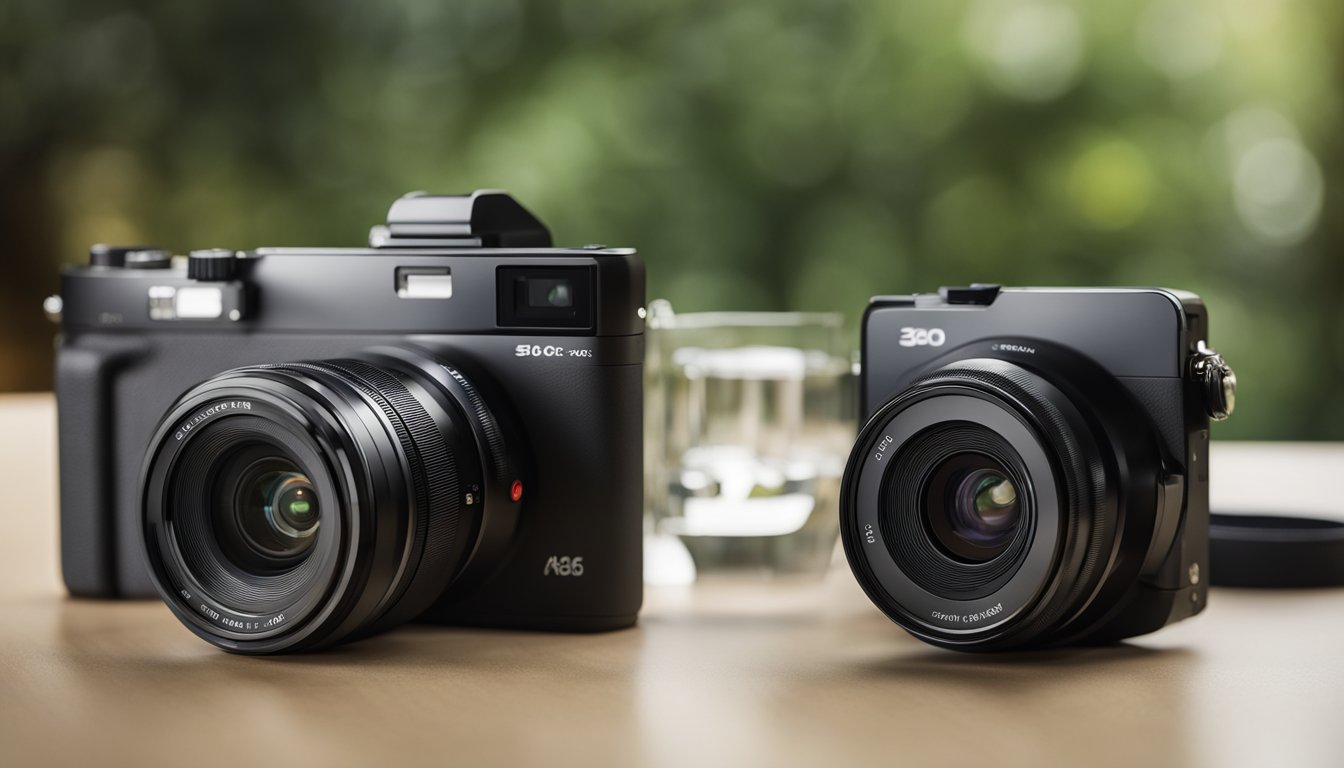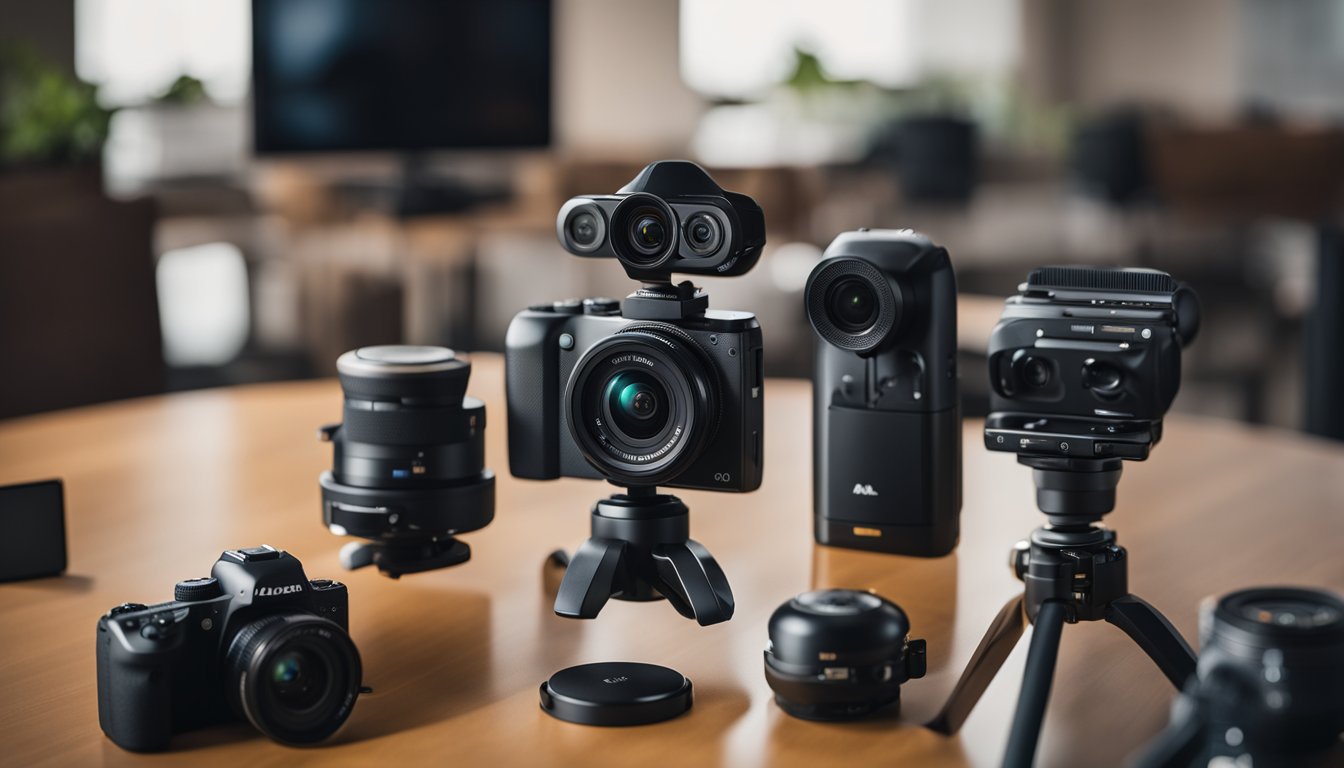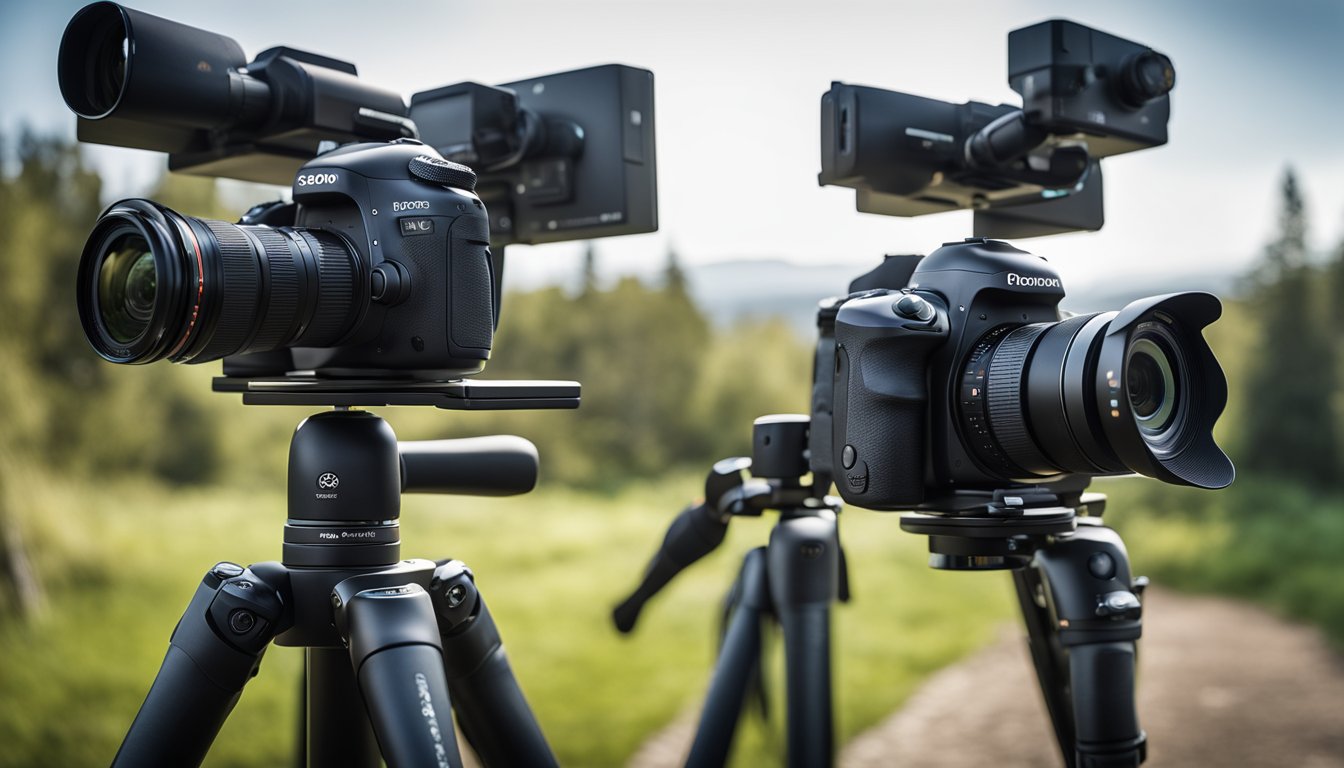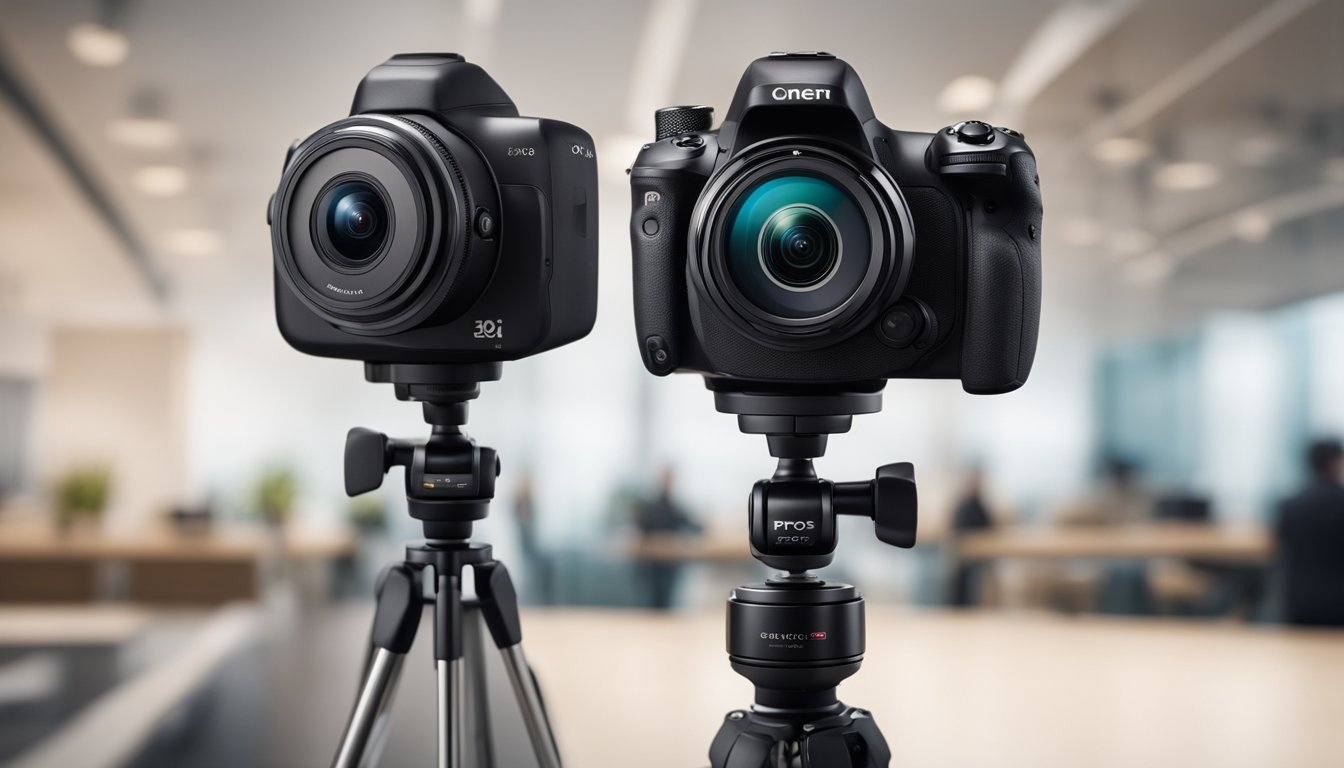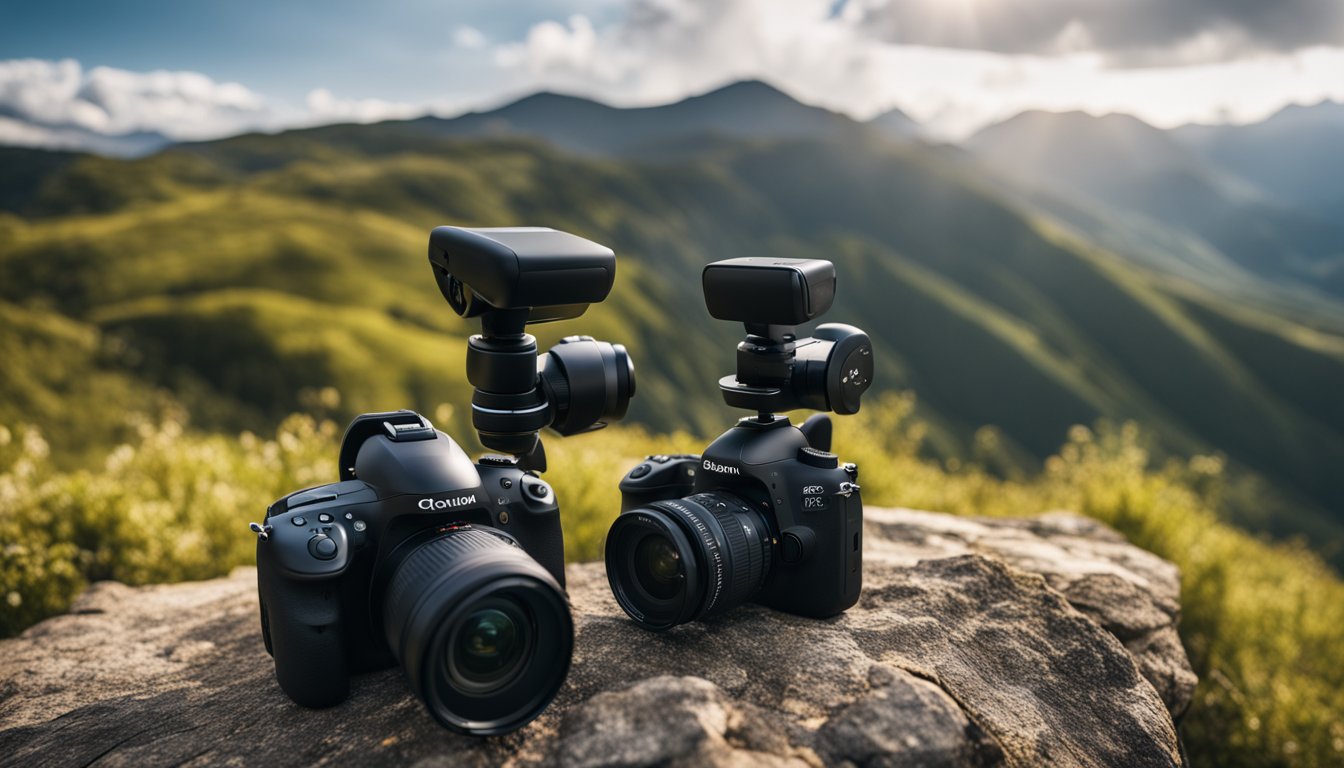If you’re in the market for a new camera, you may be wondering whether a 360 camera or a regular camera is the better choice for you. Both types of cameras have their own unique features and benefits, and choosing the right one will depend on your specific needs and preferences.
360 cameras are designed to capture a full 360-degree view of your surroundings, which makes them ideal for creating immersive virtual reality experiences. They are also great for capturing panoramic photos and videos, and can be used to create unique content for social media platforms like Instagram and Facebook. On the other hand, regular cameras are designed to capture high-quality photos and videos with a more traditional field of view. They are generally more versatile than 360 cameras, and can be used for a wide range of photography and videography applications.
When deciding between a 360 camera and a regular camera, it’s important to consider factors like image and video quality, usability and convenience, camera performance, and content creation and sharing capabilities. Each type of camera has its own pros and cons, and choosing the right one will depend on your specific needs and preferences. In the following sections, we’ll explore the differences between 360 cameras and regular cameras in more detail, and help you decide which type of camera is right for you.
Key Takeaways
- 360 cameras are ideal for creating immersive virtual reality experiences and capturing panoramic photos and videos.
- Regular cameras are generally more versatile and can be used for a wide range of photography and videography applications.
- When choosing between a 360 camera and a regular camera, consider factors like image and video quality, usability and convenience, camera performance, and content creation and sharing capabilities.
Exploring 360 Cameras
https://www.youtube.com/watch?v=5zWpa0btOvk&embed=true
If you’re looking to capture a more immersive experience, you may want to consider using a 360 camera. These cameras capture a full 360-degree view of the surrounding environment, giving viewers a more interactive and engaging experience. In this section, we’ll explore what 360 cameras are, how they work, and the benefits of using them over traditional cameras.
What Are 360 Cameras?
360 cameras, also known as 360-degree cameras, are cameras that capture a full 360-degree view of the surrounding environment. These cameras use multiple lenses to capture images from all angles, which are then stitched together to create a single, seamless image. This allows viewers to explore the environment in any direction, giving them a more immersive experience.
There are several types of 360 cameras available on the market, ranging from budget-friendly options to high-end professional cameras. Some popular 360 cameras include the Samsung Gear 360, Ricoh Theta, and Insta360.

Understanding 360 Videos
360 videos are videos that are filmed using 360 cameras, allowing viewers to explore the environment in any direction. These videos are typically viewed using a VR headset, which gives viewers a more immersive experience.
One of the benefits of using a 360 camera for video is that it allows you to capture a full 360-degree view of the surrounding environment, giving viewers a more immersive experience. Additionally, 360 videos can be used in a variety of industries, including real estate, tourism, and entertainment.
Overall, 360 cameras offer a unique and engaging way to capture and share your experiences. Whether you’re a professional photographer or just looking to capture your next vacation, a 360 camera can help you create stunning and immersive content.
Regular Cameras Defined
When it comes to cameras, there are two main types: regular cameras and 360 cameras. Regular cameras, also known as traditional cameras, come in different types, such as DSLRs and mirrorless cameras. These cameras are designed to capture images in a traditional, rectangular format.
Traditional Camera Types
« Free Movies with 360 Camera: Experience Cinema Like Never Before!
What Is the Best 360 Car Camera for Your Driving Needs? »
DSLRs, or digital single-lens reflex cameras, are popular among professional photographers. They use a mirror and prism system to reflect light from the lens to the viewfinder. This allows you to see exactly what you’re capturing in real-time. DSLRs are known for their high-quality images, fast shutter speeds, and interchangeable lenses.
Mirrorless cameras, on the other hand, don’t have a mirror system. Instead, they use electronic viewfinders to display what the lens sees. This makes them smaller and lighter than DSLRs while still producing high-quality images. They also have interchangeable lenses, but their autofocus system is generally faster than DSLRs.
Regular Camera Capabilities
Regular cameras are designed to capture images and videos in a traditional, rectangular format. They offer a wide range of capabilities, including manual controls, different shooting modes, and the ability to change lenses. They also come with various features, such as image stabilization, autofocus, and built-in flash.
Regular cameras are great for capturing everyday moments, portraits, landscapes, and more. They’re also ideal for creating high-quality prints and enlargements. Whether you’re a professional photographer or an amateur, regular cameras offer a lot of flexibility and creative control.
In summary, regular cameras are designed to capture images in a traditional, rectangular format. They come in different types, such as DSLRs and mirrorless cameras, and offer a wide range of capabilities and features.
Comparing Lenses and Field of View
https://www.youtube.com/watch?v=5H-2d3B7J5I&embed=true
When it comes to capturing a moment, the lens and field of view (FOV) are two critical factors to consider. A 360 camera and a regular camera have different lenses and FOV, which can affect the final image or video. In this section, we’ll compare the lenses and FOV of 360 cameras and regular cameras.
360 Camera Lenses
360 cameras have dual or multiple lenses that capture a full 360-degree view. These cameras use fisheye lenses that have a very wide-angle of view, typically around 180 degrees. The lens distorts the image, producing a spherical image that can be viewed in any direction. The spherical image can be edited and cropped to create a flat image or video.
The fisheye lens used in 360 cameras has a significant advantage over regular cameras when it comes to capturing a wide-angle view. You can capture everything in a single shot, which saves time and effort. However, the fisheye lens can cause distortion at the edges of the image, which may not be suitable for some applications.
Regular Camera Lenses
Regular cameras have a single lens that captures a specific field of view. The lens’s angle of view determines how much of the scene can be captured in a single shot. A wide-angle lens has a broader field of view, typically between 100 and 180 degrees, making it ideal for capturing landscapes, architecture, and interiors.
A regular camera lens has a fixed field of view, which means you have to move the camera or change the lens to capture a wider or narrower view. This can be time-consuming and may not be practical in some situations. However, regular camera lenses produce images that are more natural and less distorted than 360 cameras.
In conclusion, the lens and field of view are essential factors to consider when choosing between a 360 camera and a regular camera. A 360 camera’s fisheye lens can capture everything in a single shot, but it can cause distortion at the edges of the image. A regular camera lens can produce more natural images but may require changing the lens or moving the camera to capture a wider view.
Image and Video Quality
https://www.youtube.com/watch?v=k_xGcuy4_fs&embed=true
When it comes to image and video quality, there are some key differences between 360 cameras and regular cameras. Here are some factors to consider:
Resolution and Detail
One of the most important factors to consider when comparing cameras is resolution. Generally speaking, 360 cameras have lower resolution than regular cameras. This is because they have to capture a much wider field of view, which means that each individual part of the image has less detail. However, some newer 360 cameras are able to shoot in 4K or higher, which can help to mitigate this issue.
Dynamic Range and Low Light Performance
Another important factor to consider is dynamic range and low light performance. Dynamic range refers to the range of brightness levels that a camera is able to capture, while low light performance refers to how well a camera is able to capture images in low light conditions.
In general, regular cameras tend to have better dynamic range and low light performance than 360 cameras. This is because they are able to use larger sensors and better lenses, which allow them to capture more light and detail. However, some newer 360 cameras are beginning to close the gap in this area.
Overall, when it comes to image and video quality, regular cameras tend to have an edge over 360 cameras. However, if you’re looking to capture immersive, 360-degree content, a 360 camera is still the way to go. Just be sure to choose a camera with the highest resolution and best low light performance you can afford.
Usability and Convenience
When it comes to usability and convenience, both 360 cameras and regular cameras have their own pros and cons. Here are a few factors to consider:
Ease of Use
Regular cameras are generally simpler to use than 360 cameras. With a regular camera, you simply point and shoot. On the other hand, 360 cameras require a bit more setup and preparation. You need to ensure that the camera is capturing everything around you, and you may need to adjust the settings to get the desired effect.
Editing and Software
Editing and software can also be a factor in usability and convenience. With regular cameras, there are a wide variety of editing software options available, from basic to professional-grade. However, with 360 cameras, the options are more limited. You’ll need specialized software to edit and stitch together your 360 footage.
That being said, many 360 cameras come with their own editing software that is specifically designed for their camera. These apps can be very user-friendly and make it easy to edit and share your 360 footage. Additionally, there are many online tutorials available that can help you learn how to edit your 360 footage.
Overall, while regular cameras may be simpler to use and edit, 360 cameras are becoming increasingly user-friendly and convenient. If you’re willing to put in a bit of extra effort to learn the software and editing techniques, a 360 camera can provide a unique and immersive experience.
Camera Performance
When it comes to camera performance, both 360 cameras and regular cameras have their own strengths and weaknesses. In this section, we will take a closer look at two important factors that affect camera performance: stabilization features and sensor capabilities.
Stabilization Features
Stabilization features are crucial for capturing smooth and steady footage, especially when you are on the move. 360 cameras and regular cameras both offer different types of stabilization features.
360 cameras typically come with built-in stabilization features that can help reduce camera shake and produce smoother footage. Some 360 cameras even come with advanced stabilization features like FlowState stabilization, which uses advanced software algorithms to keep footage stable even when the camera is moving rapidly.
Regular cameras, on the other hand, may not come with built-in stabilization features, but they often offer the option to attach external stabilizers like gimbals or tripods. These accessories can help reduce camera shake and produce smoother footage, but they can also be bulky and inconvenient to carry around.
Sensor Capabilities
Sensor capabilities are another important factor that affects camera performance. The sensor is responsible for capturing light and converting it into an image. The larger the sensor, the more light it can capture, which generally results in better image quality.
360 cameras typically come with smaller sensors than regular cameras, which can result in lower image quality, especially in low-light conditions. However, some 360 cameras like the Insta360 ONE X2 come with advanced sensors that can capture high-quality images even in low-light conditions.
Regular cameras, on the other hand, typically come with larger sensors that can capture more light and produce higher-quality images. This makes them a better choice for professional photographers and videographers who require the best possible image quality.
In conclusion, both 360 cameras and regular cameras offer different types of stabilization features and sensor capabilities that affect camera performance. When choosing between the two, it is important to consider your specific needs and use cases to determine which type of camera is best for you.
Content Creation and Sharing
https://www.youtube.com/watch?v=5MvtlBYOFHg&embed=true
When it comes to content creation and sharing, there are some key differences between using a 360 camera and a regular camera. Let’s take a closer look at how each type of camera can be used for different types of content.
For Social Media
If you’re looking to create content for social media platforms like Instagram or Facebook, a regular camera may be your best bet. Regular cameras are great for capturing high-quality images and videos that can be easily shared on these platforms. With a regular camera, you can take advantage of features like depth of field and optical zoom to create stunning images and videos that will stand out on your feed.
That being said, 360 cameras have their own advantages when it comes to social media. If you’re looking to create immersive content that will really grab your audience’s attention, a 360 camera can help you do just that. With a 360 camera, you can create videos and images that allow your viewers to explore your surroundings in a way that’s simply not possible with a regular camera.
For Virtual Tours
If you’re looking to create virtual tours, a 360 camera is the way to go. With a 360 camera, you can capture every angle of a space, allowing your viewers to explore it in detail. This is especially useful for real estate agents or businesses that want to showcase their space in a way that’s more immersive than traditional photos or videos.
When it comes to sharing your virtual tours, platforms like YouTube are a great option. YouTube allows you to upload 360 videos that your viewers can explore using their mouse or a VR headset. This makes it easy to share your virtual tours with a wide audience.
Overall, both regular cameras and 360 cameras have their own strengths and weaknesses when it comes to content creation and sharing. By understanding the benefits of each type of camera, you can choose the one that’s right for your needs and create content that will really stand out.
Camera Accessories and Extensions
https://www.youtube.com/watch?v=BtYEpniiaRk&embed=true
Enhancing Your Camera’s Potential
When it comes to taking photos or videos, having the right accessories can make all the difference. Whether you’re using a 360 camera or a regular camera, there are a few accessories that can enhance your camera’s potential.
One essential accessory for any camera is an SD card. This allows you to store more photos and videos, and it’s especially important if you’re using a 360 camera, which produces larger files than a regular camera. Make sure to choose an SD card with a high storage capacity and fast transfer speeds for the best performance.
Another useful accessory is a selfie stick, which can help you take better selfies or group photos. This is especially important if you’re using a 360 camera, which captures everything around it. A selfie stick can help you position the camera at the right angle and distance for the best shot.
If you’re looking to capture smooth, stable footage, a gimbal is a great accessory to have. A gimbal is a handheld device that stabilizes your camera and reduces shaky footage. This is especially useful if you’re using a 360 camera, which can produce dizzying footage if not stabilized properly.
In addition to these accessories, there are many other extensions and add-ons available for both 360 cameras and regular cameras. These include lens attachments, filters, and external flashes, among others. Consider your needs and budget when choosing which accessories to invest in.
Overall, having the right accessories and extensions can help you get the most out of your camera, whether it’s a 360 camera or a regular camera. From SD cards to selfie sticks to gimbals, these tools can help you capture better photos and videos with ease.
Pros and Cons of 360 Cameras
https://www.youtube.com/watch?v=jjnctKqZzSg&embed=true
Advantages of 360 Cameras
360 cameras are an all-in-one solution for capturing immersive photos and videos. They offer a unique perspective that regular cameras cannot match. With 360 cameras, you can capture everything around you without worrying about the stitch line. Here are some of the advantages of 360 cameras:
-
Versatility: 360 cameras are versatile and can be used for various purposes, including travel, real estate, and events. They are perfect for capturing panoramic views of landscapes, architecture, and interiors.
-
All-in-one solution: 360 cameras are an all-in-one solution, eliminating the need for multiple cameras and lenses. With a 360 camera, you can capture both photos and videos, making it a great tool for content creators.
-
Immersive experience: 360 cameras provide an immersive experience that regular cameras cannot match. They allow viewers to explore the scene and feel like they are there.
Challenges with 360 Cameras
While 360 cameras offer many advantages, they also come with some challenges. Here are some of the challenges you may face when using a 360 camera:
-
Limited resolution: 360 cameras have limited resolution compared to regular cameras. This means that the quality of the photos and videos may not be as high as you would like.
-
Editing: Editing 360 photos and videos can be challenging, especially if you are new to the technology. You need specialized software to stitch the footage and create a seamless image.
-
Price: 360 cameras can be expensive compared to regular cameras. However, the price has come down in recent years, making them more accessible to consumers.
Overall, 360 cameras offer a unique perspective that regular cameras cannot match. They are versatile, all-in-one solutions that provide an immersive experience. However, they also come with some challenges, including limited resolution, editing difficulties, and price.
Pros and Cons of Regular Cameras
Benefits of Regular Cameras
Regular cameras are a great choice for capturing high-quality photos and videos. They offer a number of benefits that make them a popular choice among photography enthusiasts. Here are some of the benefits of regular cameras:
- Image Quality: Regular cameras are known for producing high-quality images with great detail and clarity. They offer better image quality than most 360 cameras.
- Low Light Performance: Regular cameras do well in low-light conditions and produce better images than most 360 cameras. They have larger sensors and better lenses that allow them to capture more light, resulting in better image quality.
- Zoom: Regular cameras have better zoom capabilities than most 360 cameras. They offer optical zoom, which allows you to zoom in without losing image quality.
Limitations of Regular Cameras
While regular cameras offer a number of benefits, they also have some limitations. Here are some of the limitations of regular cameras:
- Limited Field of View: Regular cameras have a limited field of view, which means they can only capture what is in front of them. They are not able to capture a 360-degree view like most 360 cameras.
- Less Immersive: Regular cameras are less immersive than 360 cameras. They do not offer the same level of immersion as 360 cameras, which can make the viewing experience less engaging.
- Bulky and Heavy: Regular cameras are often bulky and heavy, which can make them difficult to carry around. They require additional equipment like tripods and camera bags, which can add to the weight.
Overall, regular cameras are a great choice for capturing high-quality photos and videos. They offer better image quality, low light performance, and zoom capabilities than most 360 cameras. However, they have limitations like a limited field of view, less immersive experience, and being bulky and heavy.
Choosing the Right Camera for You
https://www.youtube.com/watch?v=W-PU2FcL9sY&embed=true
If you are in the market for a new camera, you may be wondering whether to choose a 360 camera or a regular camera. Here are some considerations to help you decide which camera is right for you.
Considerations for Beginners
If you are new to photography, a regular camera may be a better choice for you. Regular cameras are easier to use and require less technical knowledge than 360 cameras. They are also more versatile and can be used for a wider range of photography styles and settings.
However, if you want to experiment with 360-degree photography, the Insta360 One or GoPro Max are good options for beginners. They are easy to use and offer a range of features that make it easy to capture stunning 360-degree photos and videos.
Advanced User Preferences
If you are an advanced photographer, you may prefer a 360 camera for its unique features and capabilities. 360 cameras offer a new perspective on photography and allow you to capture immersive panoramic photos and videos.
The Insta360 X3 is a top-of-the-line 360 camera with advanced features such as 360-degree live streaming, HDR video, and a built-in GPS. It also offers a range of creative shooting modes and editing tools to help you create stunning 360-degree content.
Location is also an important consideration when choosing a camera. If you are planning to shoot in rugged or extreme environments, a GoPro Max may be a better choice as it is more durable and waterproof than the Insta360 One or X3.
Ultimately, the choice between a 360 camera and a regular camera comes down to personal preference and the type of photography you want to do. Take some time to consider your needs and preferences before making a decision.
Frequently Asked Questions
What are the benefits of using a 360-degree camera compared to a regular camera?
A 360-degree camera captures a full panoramic view, which means that you can capture everything around you in a single shot. This is particularly useful for capturing immersive content, such as virtual tours, sports events, and concerts. With a 360-degree camera, you can also create interactive content that allows your viewers to explore the scene from different angles. Additionally, a 360-degree camera is more versatile than a regular camera, as it can be used for both photos and videos.
How does a 360 camera differ in functionality from a traditional action camera?
A 360 camera differs from a traditional action camera in that it captures a full panoramic view, while an action camera captures a linear view. This means that a 360 camera is better suited for capturing immersive content, such as virtual tours, sports events, and concerts, while an action camera is better suited for capturing linear content, such as skiing, surfing, and skydiving. Additionally, a 360 camera is more versatile than an action camera, as it can be used for both photos and videos.
What are some potential drawbacks of choosing a 360 camera over a standard camera?
One potential drawback of choosing a 360 camera over a standard camera is that the image quality may not be as good. This is because a 360 camera has to stitch together multiple images to create a panoramic view, which can result in lower image quality. Additionally, a 360 camera may be more expensive than a standard camera, and it may require specialized software to edit the footage.
In what ways do camera accessories enhance the image quality of a 360 camera?
Camera accessories, such as tripods, stabilizers, and lenses, can enhance the image quality of a 360 camera by providing stability and improving the focus. A tripod can help keep the camera steady, while a stabilizer can reduce camera shake. A lens can improve the focus and provide a wider field of view.
Can you explain how a 360 camera captures a full panoramic view?
A 360 camera captures a full panoramic view by using multiple lenses to capture images from different angles. These images are then stitched together using specialized software to create a panoramic view. The resulting image or video can be viewed on a computer or mobile device, and the viewer can explore the scene from different angles.
Is investing in a 360-degree camera a good choice for capturing immersive content?
Investing in a 360-degree camera can be a good choice for capturing immersive content, such as virtual tours, sports events, and concerts. However, it may not be the best choice for all types of content. If you primarily shoot linear content, such as skiing, surfing, and skydiving, an action camera may be a better choice. Additionally, if you are on a tight budget, a standard camera may be a more affordable option.


